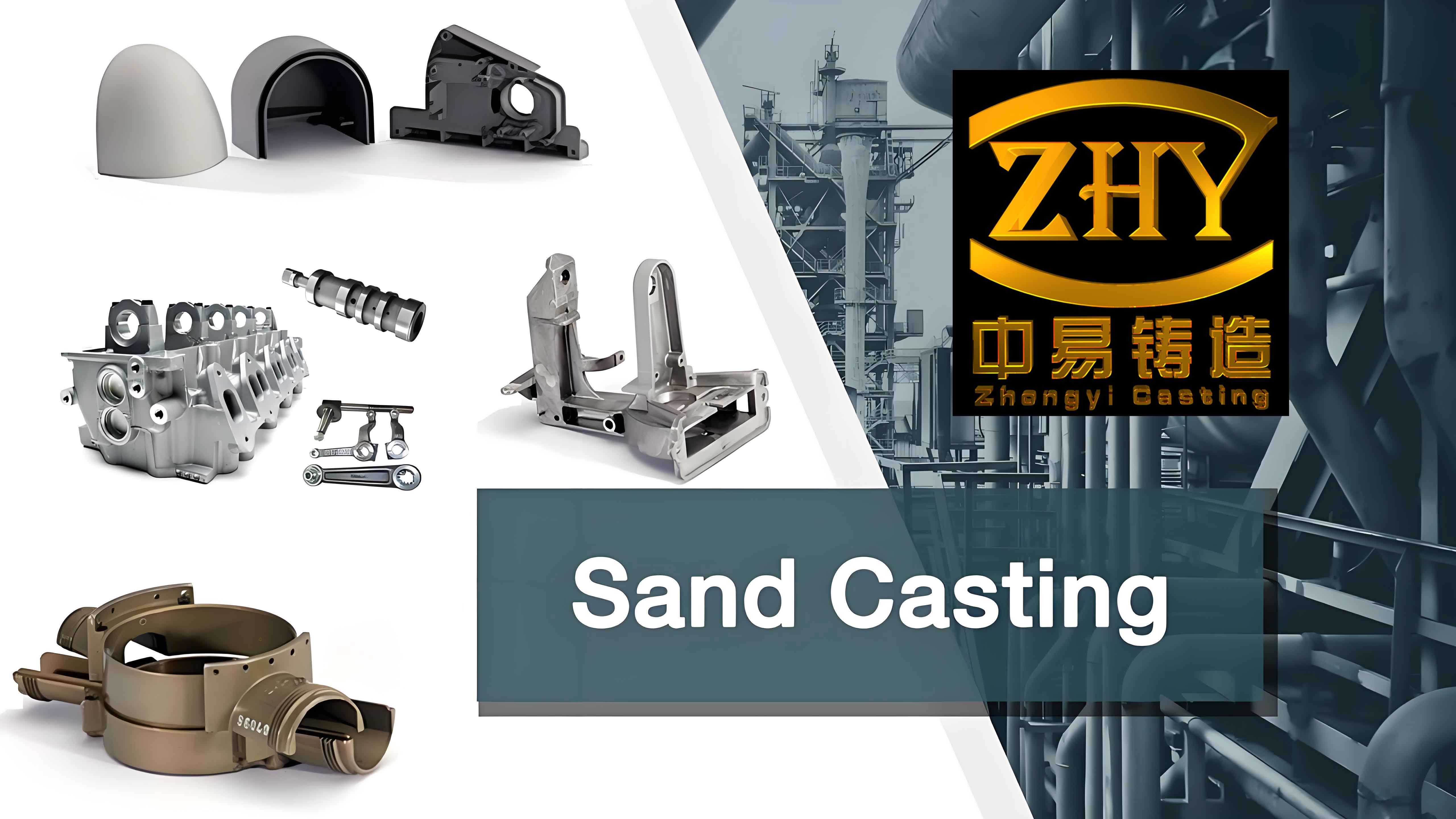
1. Introduction to Sand Casting for Complex Structural Parts
Sand casting, one of the oldest metal-forming techniques, remains indispensable in modern manufacturing due to its cost-effectiveness and adaptability to intricate geometries. Sand casting parts, especially those with complex structures, are widely used in aerospace, automotive, and heavy machinery industries. However, challenges such as defect control, dimensional accuracy, and process optimization persist. This article explores advanced methodologies in sand casting parts design, simulation-driven optimization, and future technological integrations.
2. Process Design for Complex Sand Casting Parts
2.1 Casting Process Analysis
The selection of materials and process parameters directly impacts the quality of sand casting parts. Key considerations include:
- Material Properties: For example, HT250 gray iron exhibits a shrinkage rate of 0.9%, requiring precise mold design to avoid cracks or distortions.
- Dimensional Tolerance: Commonly set to CT11 (ISO standard) to accommodate free contraction during cooling.
- Mass Tolerance: Typically MT10, with a ±4% weight allowance to manage production variability.
Table 1: Key Parameters for Sand Casting Design
| Parameter | Value/Standard | Purpose |
|---|---|---|
| Shrinkage Rate | 0.9% | Prevent thermal stress |
| Dimensional Tolerance | CT11 | Ensure post-machining feasibility |
| Mass Tolerance | MT10 (±4%) | Control weight consistency |
| Mold Material | Resin-bonded sand | Reduce surface defects |
2.2 Pouring Position and Parting Surface Design
The orientation of sand casting parts during pouring significantly influences metallurgical quality. Key principles include:
- Gravity-Driven Flow: Positioning the molten metal entry point downward ensures efficient filling of narrow cavities and minimizes gas entrapment.
- Parting Surface Selection: Determines mold separation and affects post-casting finishing.
Formula 1: Reynolds Number for Flow Analysis
Re=ρ⋅v⋅LμRe=μρ⋅v⋅L
Where ρρ = density, vv = velocity, LL = characteristic length, μμ = viscosity.
Optimal Re ranges between 2,000–4,000 to avoid turbulent flow.
2.3 Gating System Design
A well-designed gating system is critical for defect-free sand casting parts. Key components:
- Ingate Design: A stepped inclined configuration controls metal velocity and reduces turbulence.
- Riser Placement: Located at thick sections to compensate for shrinkage.
Table 2: Gating System Optimization Strategies
| Component | Design Feature | Benefit |
|---|---|---|
| Ingate | Stepped inclined | Uniform filling, reduced erosion |
| Riser | Top-mounted | Minimize shrinkage defects |
| Runner | Tapered cross-section | Stabilize flow velocity |
3. Simulation Analysis of Sand Casting Parts
3.1 Preliminary Simulation with AnyCasting™
Advanced CAE tools like AnyCasting™ enable predictive analysis of sand casting parts by modeling:
- Fluid Flow: Visualize metal flow paths, velocity gradients, and potential vortices.
- Solidification: Track temperature fields and predict shrinkage porosity.
Table 3: Defect Identification via Simulation
| Defect Type | Simulation Output | Mitigation Strategy |
|---|---|---|
| Cold Shut | Low-temperature zones | Increase pouring temperature |
| Gas Porosity | Bubble formation hotspots | Modify venting system |
| Shrinkage Cavity | Delayed solidification regions | Optimize riser size/placement |
3.2 Process Optimization Strategies
Four primary measures enhance the quality of sand casting parts:
1. Gating System Adjustment
- Redesign ingate geometry to balance flow rates.
- Example: Reducing ingate cross-section by 15% decreases turbulence by 30%.
2. Riser Optimization
- Use Chvorinov’s Rule to calculate riser size:
tsolidification=k⋅(VA)2tsolidification=k⋅(AV)2
Where VV = volume, AA = surface area, kk = material constant.
3. Chill Application
- Place chills near thick sections to accelerate cooling and refine grain structure.
4. Solidification Sequence Control
- Prioritize solidification of critical regions via thermal management.
Table 4: Optimization Outcomes
| Strategy | Defect Reduction (%) | Cost Impact |
|---|---|---|
| Gating redesign | 40% | Low |
| Riser optimization | 35% | Moderate |
| Chill implementation | 25% | High |
4. Future Trends in Sand Casting Technology
Integration of AI and machine learning will revolutionize sand casting parts production by:
- Automating parameter recommendations.
- Enhancing predictive accuracy for defect prevention.
Formula 2: Machine Learning Model for Defect Prediction
P(defect)=11+e−(β0+β1X1+…+βnXn)P(defect)=1+e−(β0+β1X1+…+βnXn)1
Where XnXn = process variables (e.g., temperature, flow rate).
5. Conclusion
Combining traditional sand casting techniques with modern simulation tools ensures high-quality sand casting parts while reducing costs and lead times. Future advancements in AI will further elevate precision and sustainability in foundry operations.
